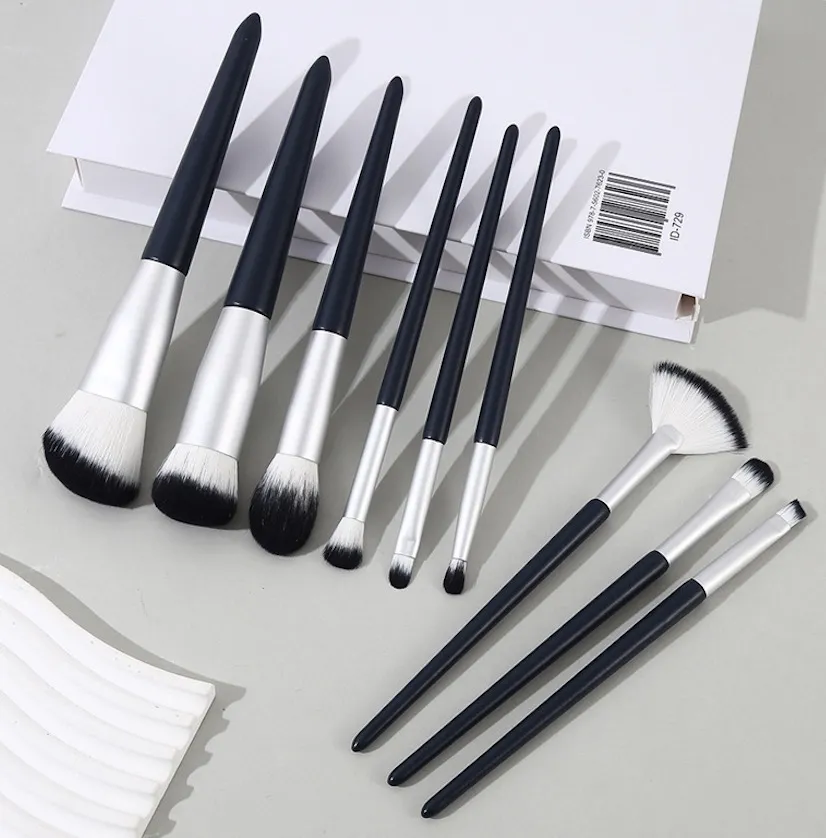Are you worried your supplier’s "vegan" brushes aren’t actually synthetic? This uncertainty puts your brand’s reputation at risk. I’ll show you the factory-floor tests we use to be sure.
To tell if a makeup brush is synthetic, check documents for PBT1 or nylon, and confirm under a microscope that fibers lack natural cuticle scales. Synthetics have uniform tips, absorb less liquid, and melt in a burn test, while animal hair singes and smells like burning hair.
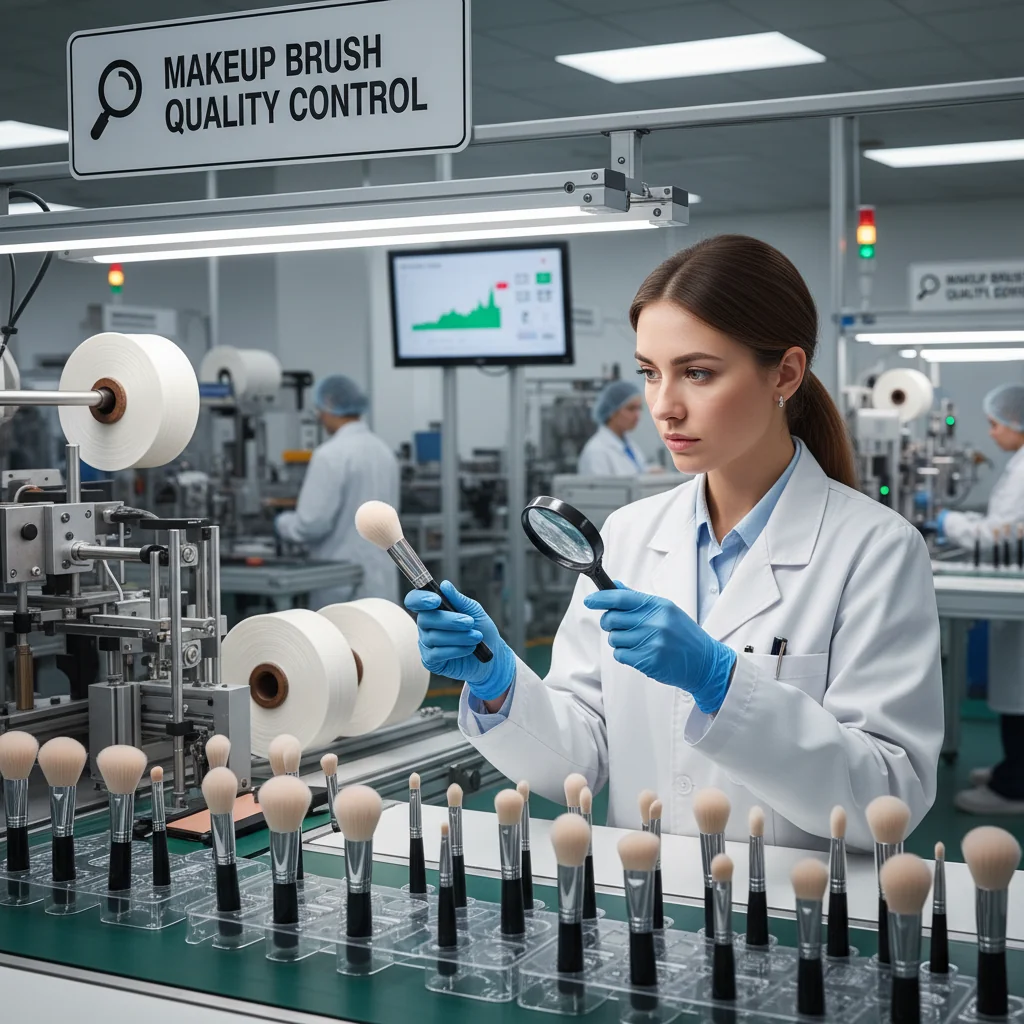
As a brand founder, you need to be 100% confident in your product claims. Saying a brush is cruelty-free or vegan is a big promise. If your supplier gets it wrong, it’s your brand that pays the price. I’ve spent years on the factory floor, and I know that you can’t just take a supplier’s word for it. You need proof. The good news is that you don’t always need an expensive lab. There are practical, reliable ways your team can check if your brush bristles are synthetic. Below, I’ll walk you through the exact framework my QC teams use, from simple visual checks to more technical tests. This will give you the confidence to source brushes that truly align with your brand values and performance standards2.
All synthetic brushes are made from the same type of plastic.False
Most are made from PBT, PET, or nylon. PBT is the premium choice for its softness, durability, and performance with creams.
Synthetic makeup brush bristles have a smooth surface without the cuticle scales found on animal hair.True
This is a key difference visible under a microscope. The lack of cuticles makes synthetics less porous and easier to clean.
Do synthetic makeup brushes pick up powder as well as natural hair?
Worried that synthetic brushes won’t work with your powder formulas? Poor pickup can lead to patchy application and unhappy customers. But modern synthetics are engineered to perform beautifully.
Yes, they do. High-performance synthetic filaments, like those made from PBT, are now engineered with textured surfaces that mimic natural hair. They provide excellent powder pickup3 and release, rivaling traditional animal hair brushes. Many professional brands now prefer them for their consistency and performance.
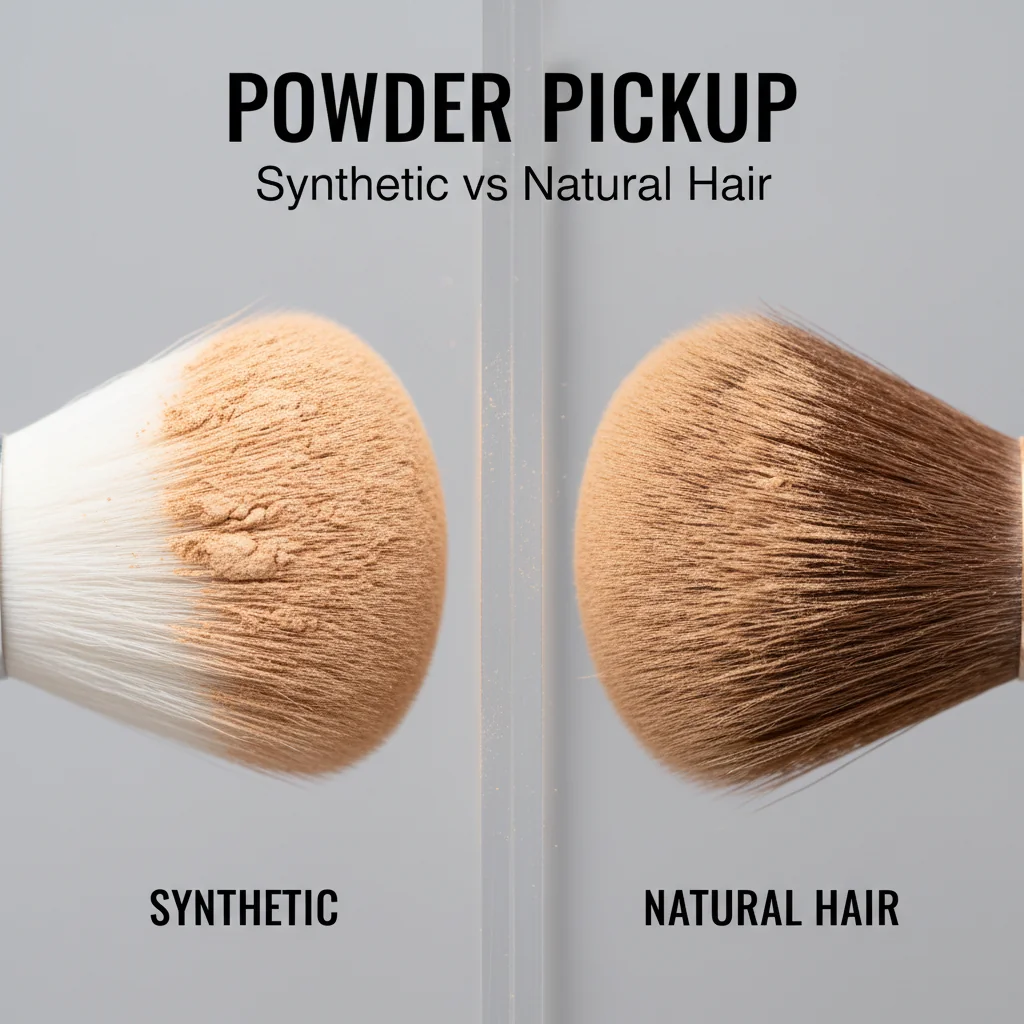
I remember when synthetic brushes had a bad reputation, especially for powders. The old synthetics were made from simple, slick nylon filaments. They were great for liquids, but powder would just slide right off. Brands had to use natural hair for their powder brushes if they wanted professional results. But the industry has changed so much since then. The big breakthrough came from companies like DuPont, which developed a program called Natrafil in the 2010s. They figured out how to engineer synthetic filaments to perform just like natural hair.
How Modern Synthetics Master Powder
Instead of being perfectly smooth, these new synthetic bristles have engineered micro-roughness4 on their surface. They are also given a very fine, tapered tip. This combination creates texture and surface area that traps powder particles, just like the natural cuticles on animal hair do.
Here’s a simple breakdown of what to look for:
| Feature | High-Performance Synthetic (PBT) | Natural Animal Hair |
|---|---|---|
| Surface | Engineered micro-texture | Natural cuticle scales |
| Powder Pickup | Excellent; designed to trap powder | Excellent; cuticles trap powder |
| Powder Release | Very controlled and even | Can be less consistent |
| Consistency | Every bristle is identical | Natural, slight variations |
This technology is why top-tier brands have confidently switched to fully synthetic and vegan brush lines without sacrificing performance. When you’re sourcing, ask your supplier about their engineered PBT filaments for powder application.
Natural hair is always better for powder makeup because it has cuticles.False
Modern engineered synthetics have textured surfaces that effectively mimic the function of natural hair cuticles, providing excellent powder pickup and release.
DuPont's Natrafil program was a key innovation that helped synthetics match the performance of natural hair for powder application.True
This program focused on engineering synthetic filaments to mimic the structure and performance of animal hair, leading to widespread adoption.
What are synthetic brush bristles made of and how do they differ?
Confused by technical terms like PBT, PET, and nylon? Choosing the wrong material can impact your brush’s performance, feel, and durability. Let’s break down the common options simply.
Most high-quality synthetic brushes today use PBT (polybutylene terephthalate). It’s the industry favorite for its superior softness, resilience, and low moisture absorption. Other materials include nylon and PET, but PBT is the premium standard for professional-grade cosmetic brushes5.
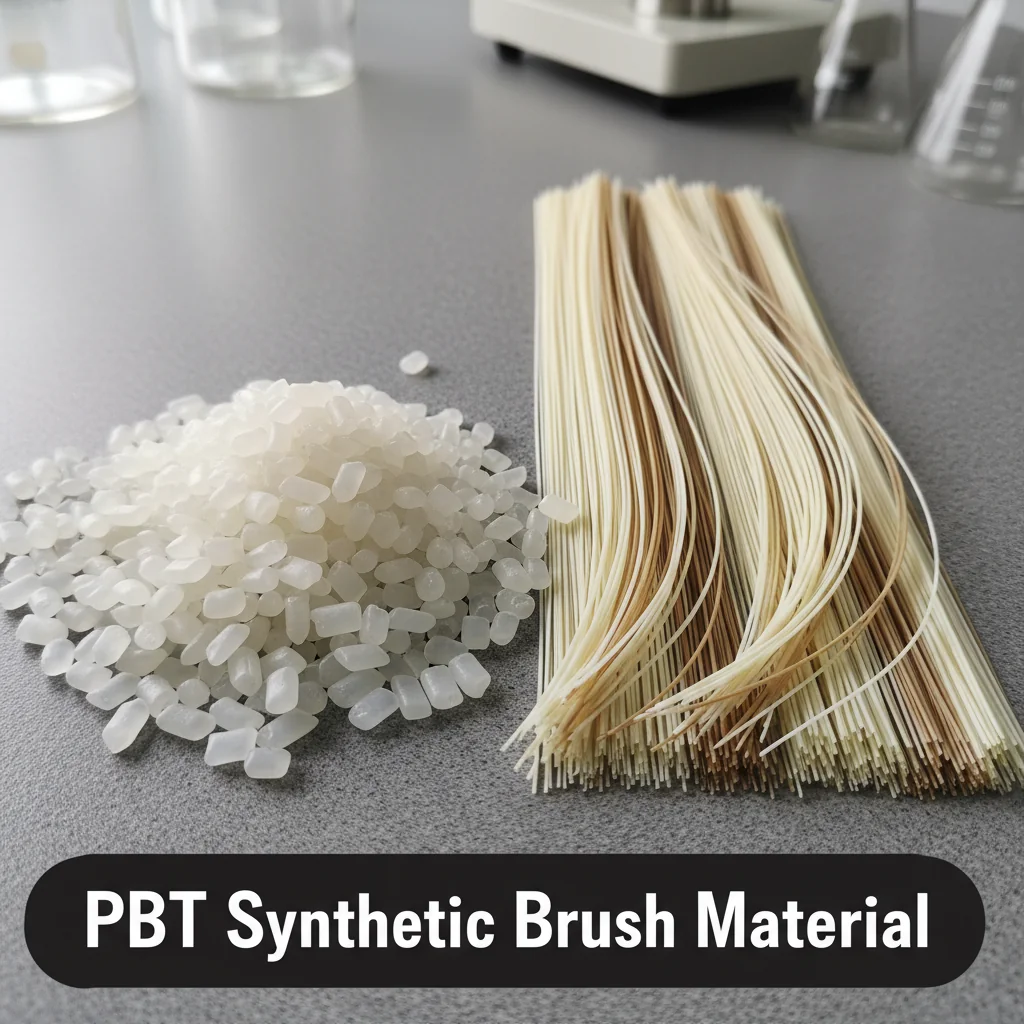
When I first started in the factory, we saw a lot of different materials. But over the years, the industry has clearly chosen a winner for high-end brushes. Not all "synthetics" are created equal, and as a brand owner, knowing the difference helps you ask the right questions and get the quality you’re paying for. The material choice directly affects how the brush feels, how it applies makeup, and how long it lasts.
The Main Types of Synthetic Filaments
Here’s a look at the polymers you’ll encounter most often when sourcing brushes.
-
PBT (Polybutylene Terephthalate): This is the gold standard for cosmetic brushes today. PBT is a type of polyester that is incredibly resilient, meaning it holds its shape well after many uses and washes. It has very low moisture absorption, which makes it perfect for liquid and cream products. It can also be engineered with extremely fine, soft tips, making it feel luxurious on the skin. When a factory offers "premium synthetic" or "vegan" bristles, they are most likely talking about PBT.
-
Nylon: This was one of the original materials used for synthetic brushes. Nylon is durable, but it tends to be stiffer and absorbs more moisture than PBT. Because of this, it can sometimes feel less soft and may not be the best choice for applying creams. It’s still used, often in more budget-friendly brushes or for specific tools like spoolies.
-
PET (Polyethylene Terephthalate): You probably know PET from water bottles. In brushes, it’s often used as a recycled material (PCR-PET), which is a great sustainability6 story for your brand. The performance of PET can vary, but advancements are making it a more viable option for brands focused on eco-friendly materials.
For your brand, specifying PBT is the safest bet for ensuring top-tier performance and feel across your entire brush line.
PBT is the most common polymer for premium makeup brushes because of its softness, durability, and low moisture absorption.True
These properties make PBT ideal for all makeup formulas, especially liquids and creams, and allow it to be engineered for a luxurious feel.
Nylon and PBT bristles have the exact same properties and performance.False
Nylon generally absorbs more moisture and can be stiffer than PBT, which is known for its superior softness and resilience.
Are synthetic brushes better for liquids and creams?
Does your foundation brush seem to drink up more product than it applies? Wasted product and a streaky finish are common frustrations. Synthetic brushes are the clear solution for this problem.
Yes, absolutely. Synthetic bristles, especially those made from PBT, are non-porous and don’t absorb wet products. This means more foundation or cream goes onto the skin, not into the brush, for a smooth, even, and streak-free application.
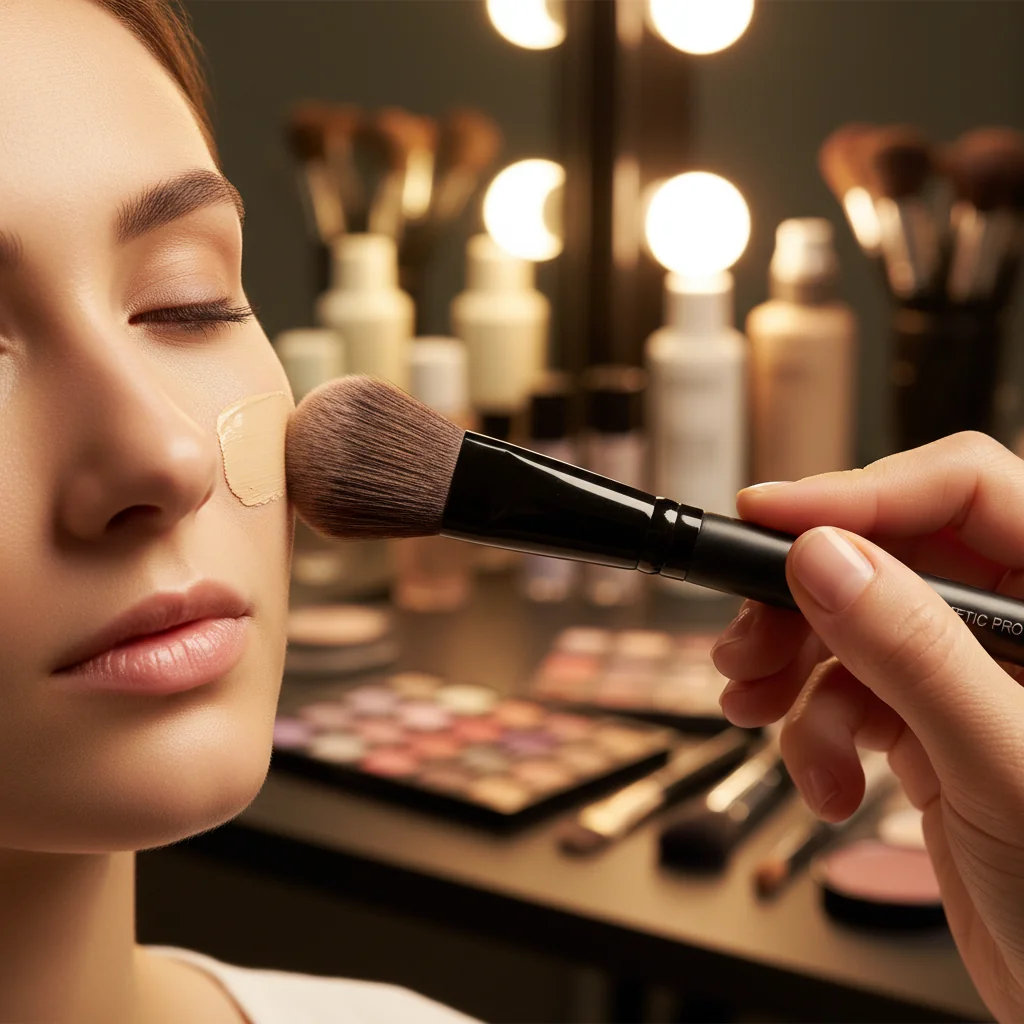
This is one area where there is no debate: synthetics outperform natural hair every time. I’ve seen the difference firsthand in product development and testing. Natural hair, like the hair on our heads, has a porous structure with cuticles. When it gets wet with liquid foundation7 or cream blush, it absorbs the product, swells up, and can leave streaks. You end up wasting product and the brush becomes much harder to clean.
The Science of a Flawless Finish
Synthetic filaments, on the other hand, are essentially solid strands of plastic. They have no pores and no cuticles to trap product.
-
Less Product Waste: Because the bristles don’t absorb makeup, the product sits on the surface of the brush. When you apply it, nearly all of it transfers directly to your skin. This means your customers will use less product to get the coverage they want.
-
Smoother Application: The smooth surface of synthetic fibers allows them to glide across the skin, laying down product evenly without streaks. The uniform shape and density of a well-made synthetic brush give you incredible control for a seamless blend.
-
Easier to Clean: With no product absorbed deep into the bristles, synthetic brushes are incredibly easy to wash. A little soap and water will remove all the makeup, helping the brush last longer and stay hygienic.
If your brand offers any liquid or cream products, pairing them with high-quality PBT synthetic brushes is a must. It improves the customer experience and reinforces the quality of your entire line.
Natural hair brushes absorb liquid and cream products due to their porous structure.True
The cuticles on animal hair trap and soak in wet formulas, leading to product waste and making the brush harder to clean.
You need to use more liquid foundation with a synthetic brush to get good coverage.False
The opposite is true. Synthetics absorb less product, so more is transferred to the skin. This often means you can use less foundation for the same result.
Are synthetic brushes more hygienic or antimicrobial?
Are you concerned about bacteria building up in your makeup brushes? Unhygienic tools can cause breakouts and damage your brand’s reputation. Synthetic brushes offer a cleaner, safer solution for your customers.
Generally, yes. The non-porous surface of synthetic bristles is much easier to clean and dries faster, which reduces the opportunity for bacteria to grow. Some advanced synthetics are also infused with antimicrobial agents8 for an extra layer of protection.
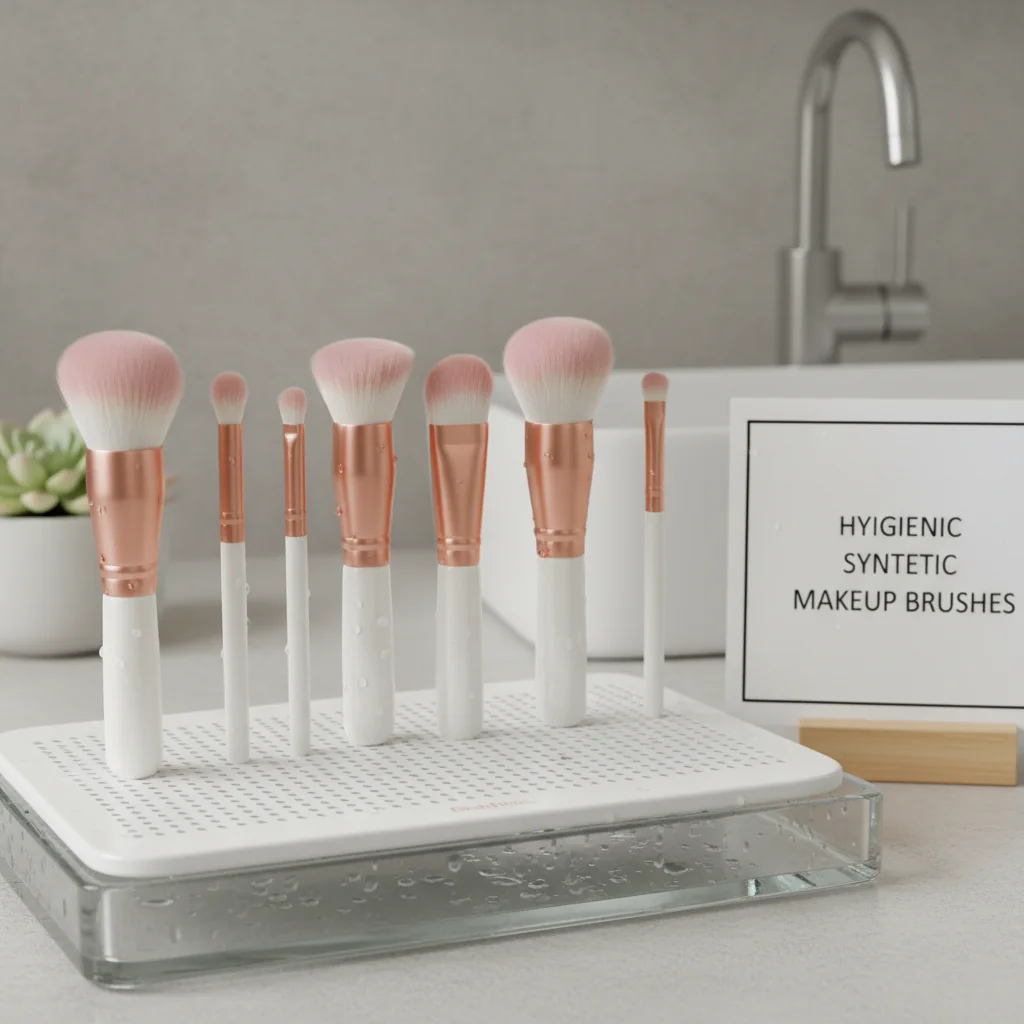
Hygiene is a huge concern for customers, and it should be for every brand owner. From my experience, one of the biggest functional benefits of switching to synthetics is how much cleaner they can be. Natural hair’s porous structure and cuticles can trap oil, skin cells, and makeup residue, even after washing. This creates a breeding ground for bacteria. Synthetic bristles don’t have this problem.
Two Levels of Hygiene
There are two ways synthetic brushes provide a more hygienic experience.
-
Easier to Clean: The smooth, solid surface of a PBT filament has nowhere for bacteria to hide. When you wash the brush, everything rinses away easily. They also dry much faster than natural hair, which is important because a damp environment encourages bacterial growth. This inherent cleanability is a major advantage.
-
Antimicrobial Additives: To take hygiene a step further, some manufacturers infuse the synthetic filaments with antimicrobial agents. This is a feature you can request from your supplier.
- How it works: Materials like silver ions or activated charcoal are mixed into the PBT polymer before the bristles are even created. These agents work to inhibit the growth of microbes on the brush surface.
- A Word of Caution: If you want to make an "antimicrobial" claim, you must do your homework. Ask your supplier for test data. You need to know which microorganisms it’s effective against, the test methods used, and how long the antimicrobial properties last after repeated washing. Don’t just take their word for it—ask for the certificates!
Any brush labeled 'antimicrobial' is guaranteed to kill all germs.False
This is a marketing claim that must be verified. Performance varies, so always request test data and certifications from your supplier to understand its true effectiveness.
Synthetic bristles with antimicrobial additives like silver or charcoal are synthetic by definition.True
These functional additives are incorporated into the polymer matrix during the manufacturing of the synthetic filament, a process not possible with natural animal hair.
Conclusion
Verifying synthetic brushes is simple with the right know-how. Use documentation, microscopy, and performance tests to ensure your brand delivers on its vegan, high-performance, and hygienic promises.
References
-
Understanding PBT is crucial for selecting high-quality synthetic brushes that perform well and feel luxurious. ↩
-
Understanding performance standards helps in sourcing brushes that align with your brand’s quality promises. ↩
-
Understanding powder pickup capabilities can help you choose the right brushes for flawless makeup application. ↩
-
Learn how micro-roughness enhances powder pickup and application, making synthetic brushes competitive with natural hair. ↩
-
Explore the various types of cosmetic brushes available to make informed choices for your makeup line. ↩
-
Explore the sustainability aspects of synthetic brushes, especially those made from recycled materials like PET. ↩
-
Find out why synthetic brushes are preferred for liquid foundation application, reducing product waste and improving results. ↩
-
Discover how antimicrobial agents improve hygiene in synthetic brushes, ensuring a safer experience for users. ↩


